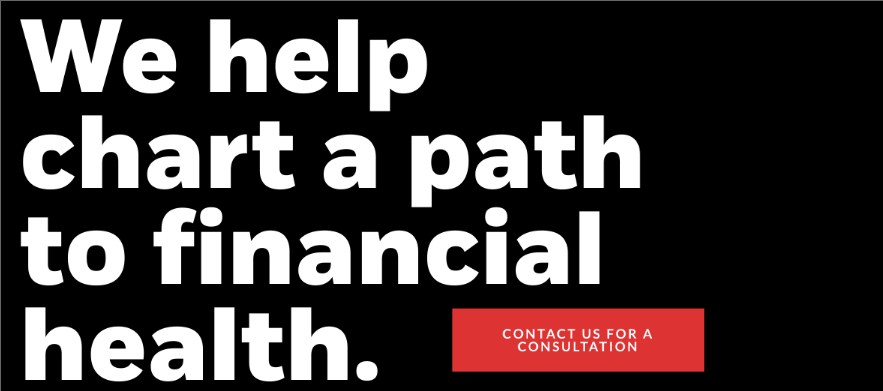How business owners can bypass Section 469 passive loss limitation by using the commercial property self-rental loophole
Do you own a business in San Diego or Socal? And do you happen to own the property where your business is located? The tax code legislation has changed since “a long time ago in a galaxy far, far away…” when there was no tax code that differentiated ordinary income from passive income or ordinary losses from passive losses. I recently read an interesting article by Stephen Nelson, a CPA at Evergreen Small Business, where life was much easier for business owner taxpayers and their savvy accountants.
High-income earners would have tax shelters set up to reduce their taxable income while still navigating within the laws of the IRS’s tax code system. Primarily by reducing their ordinary income with passive losses. Fast forward to today tax law has changed significantly and not in the taxpayers’ favor.
Mr. Nelson stated in his article that one of these tax shelters still exists. “One that lets you turn a passive loss into an ordinary loss by utilizing a self-rental property. Small business owners can get around the Section 469 passive loss limitation by utilizing the self-rental loophole.”
Background: Passive Loss History
Before the passage of the Tax Reform Act of 1986 (TRA 1986), a variety of speculative and questionable tax shelters were created involving highly leveraged (the use of borrowed funds) real estate activities. These tax shelters were set up as limited partnerships and offered investors the promise of tax savings in excess of their economic investment in the activity. High-income taxpayers tended to be the primary investors attracted to these tax-shelter schemes.
The passive activity rules (Section US Code § 469, Passive Activity Losses and Credits Limited) were enacted into law with the passage of the Tax Reform Act of 1986, which was a major tax-law overhaul.
The statute defines passive income as rental real estate and any activity in which a taxpayer doesn’t materially participate in. They closed the loophole, kind of.
There was still no statutory rule for self-rental real estate, and taxpayers were using self-rental income to absorb other passive losses. And owners could optimize their self-rental income either up or down to take 100% of their passive losses that otherwise would be unutilized and carry forward. Mr. Nelson explained that this carried on until 1992.
Regulation 1.469-2 came out and stipulated rental income is not passive if it comes from an activity a taxpayer materially participates in. This is known as the self-rental trap. Income from a self-rental now becomes ordinary income and rental losses remain passive. And this makes using a self-rental as a tax shelter very difficult.
The Self-rental Loophole example scenario 1
Let’s walk through this first hypothetical example of why it can be complicated.
Year One
John Smith owns 100% of his own professional services firm, taxed as an S Corporation. He also co-owns a building and rents the whole building to his company. At the end of the year, his professional services firm has $200,000 of net income and his portion of the rental loss is $50,000.
One would naturally make the assumption that he can net the two amounts and pay tax on $150,000, but that’s not how it works. He has a passive loss of $50,000 that she cannot take because she has no other passive income. In this scenario, he has $200,000 of taxable income.
Year Two
John Smith has a net income from the professional services firm of $250,000, his portion of the self-rental loss is $50,000, and he owns a single-family residence that he rented out with a net income of $20,000.
He is able to get the $20,000 of rental income with $20,000 of loss from his self-rental (because self-rental losses are passive). Although he still cannot take a self-rental loss because he has extinguished his passive income.
In this scenario let’s say he has a net income equal to $250,000 from the company, and his loss carryforward is now equal to $80,000; $50,000 from year 1 and $30,000 from year 2.
Unfortunately, in this specific example, John is getting the benefits from his self-rental since he cannot take the losses. But lets look at another way he can do this.
Grouping your Active Trade or Business with your Self-rental
The tax code Regulation 1.469-4 allows similar activities that constitute an appropriate economic unit to be grouped as a single activity for purposes of the passive activity loss rules. The taxpayer may use any reasonable method in grouping activities by applying the relevant facts and circumstances, and the regulation gives the most weight to these 5 factors:
- Similarities and differences in types of trades or businesses;
- The extent of common control;
- The extent of common ownership;
- Geographical location;
- Interdependencies between or among activities
Normally you are not able to group rental activities with other trade or business activities. However, you can if the rental activity and business activity constitute an appropriate economic activity, AND:
- The rental activity is insubstantial in relation to the trade or business activity;
- The trade or business activity is insubstantial in relation to the rental activity; or
- Each owner of the trade or business activity has the same proportionate ownership interest in the rental activity, in which case the portion of the rental activity that involves the rental of items of property for use in the trade or business activity may be grouped with the trade or business activity.
Grouping Statment
Once you have determined you can group your rental activity with your business activity, Rev Proc 2010-13 says you need to file a grouping statement with your tax return.
In summary, the statement must identify the names, addresses, and employer identification numbers (if applicable) for the trade or business activities or rental activities that are being grouped as a single activity. You must declare the grouped activities constitute an appropriate economic unit for the measurement of gain or loss for purposes of Section 469.
The Self-rental Loophole example scenario 1
In the first hypothetical scenario mentioned earlier, John was not a 100% owner of his professional services firm AND his self-rental property. So if we revisit that example assuming that he owns 100% of both and makes a grouping election on his tax return.
Year One
John owns 100% of his professional services firm, taxed as an S Corporation. He also owns 100% of a building and rents the whole building to his company. At the end of the year, his firm has $200,000 of net income and his rental loss is $50,000.
Now he gets to net the rental loss with his business income and has a taxable income of $150,000. Now assuming his marginal tax rate is 32%, this saves him $16,000 in taxes compared to the earlier example!
Year Two
John has a net income from the professional services firm of $250,000, a self-rental loss of $50,000, and he owns a single-family residence she rented out with a net income of $20,000.
First, he nets the rental loss with his business income, for a total of $200,000. Now if he doesn’t have any passive losses, he would then owe another $20,000 of taxable income from the new rental, for a total taxable income of $230,000.
The increased income in year 2 puts his marginal rate at 35%. Since his taxable income is $20,000 less than the previous example, his tax savings equal $7,000!
Conclusion
How can you get larger rental losses? So say you have a profitable business, and you are already required to record your net income and record income taxes. But let’s say you have already been using the self-rental strategy and have been converting the losses from passive to ordinary because you made a grouping election. You could also now do cost segregation.
Cost segregation breaks down real property, which is depreciated over 39 years, into personal property, which is often depreciated entirely in one year.
A building with a depreciable basis of $500,000 might accelerate up to $150,000 of depreciation in one year. That is adding a $150,000 deduction to a return, and a tax savings of probably more than $50,000!
It is a great way to load up deductions and offset business income in a profitable year. If you are a real estate investor in San Diego and also a business owner and would like to discuss tax planning strategies or just have a question feel free to contact Huckabee CPA for a free consultation.










